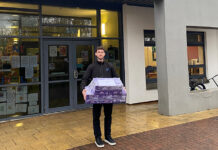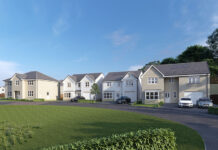
THE value of landscapes has been brought firmly into focus by the Covid-19 pandemic.
That’s the view of Mike Harrison, co-founder of Edinburgh-based landscape architecture and urban design practice HarrisonStevens, who said pandemic constraints made people realise the impact of the natural environment in terms of health and wellbeing, and also its role in adding value to projects.
HarrisonStevens recently released a book, called A Positive Contribution, which documents landmark projects the business has been involved in over the years, and also features details of a number of challenges the team was encouraged to embark upon.
The practice was founded by Mike Harrison and Martin Stevens in 2010. The duo had studied landscape architecture together many years earlier at Edinburgh College of Art and had remained firm friends.
One of HarrisonStevens’ first projects was Inverness Campus working with Highlands & Islands Enterprise. The firm was also commissioned to work on Maggie’s Gartnavel, a care hospital centre set within the Gartnavel Hospital estate in Glasgow. Public realm projects included the south canal bank in Clydebank. The business quickly built up an impressive body of work and cultivated strong relationships with architects, planners, and the construction industry.
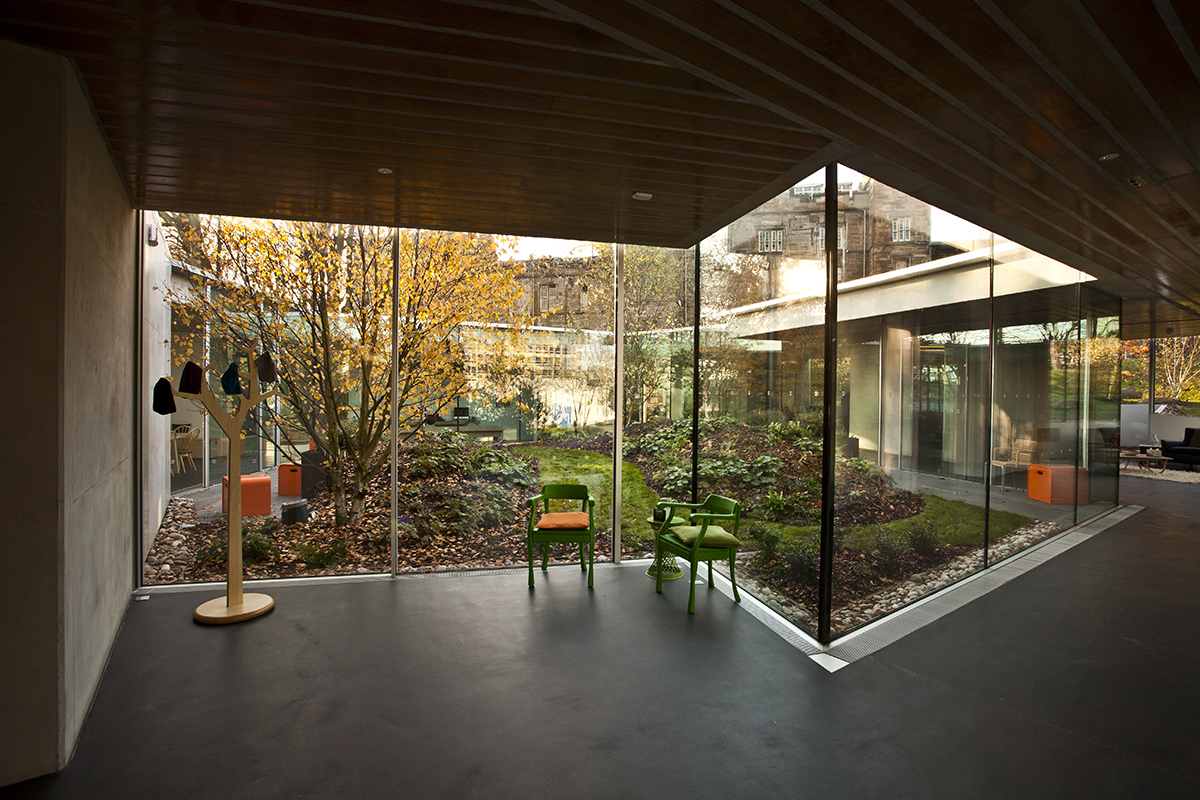
“We started the practice on the ethos of high-quality public realm work,” Mike explained. “We are an urban design practice. We very much work within cities and towns and the practice has grown pretty much organically. Within the first couple of years there were four of us. In 2017/18 we took a bit of a jump and went up to 15 staff.”
At that point, the practice relocated from Thistle Street to a larger office just off Charlotte Square in Edinburgh city centre, which remains the firm’s home to this day.
The decision to produce a book began as a way of celebrating the first ten years of the practice but evolved during lockdown into something even more substantial.
“The book is called A Positive Contribution,” Mike said. “Everything that we do we want to leave a positive contribution, whether that’s environmentally or with the community or users of the space.
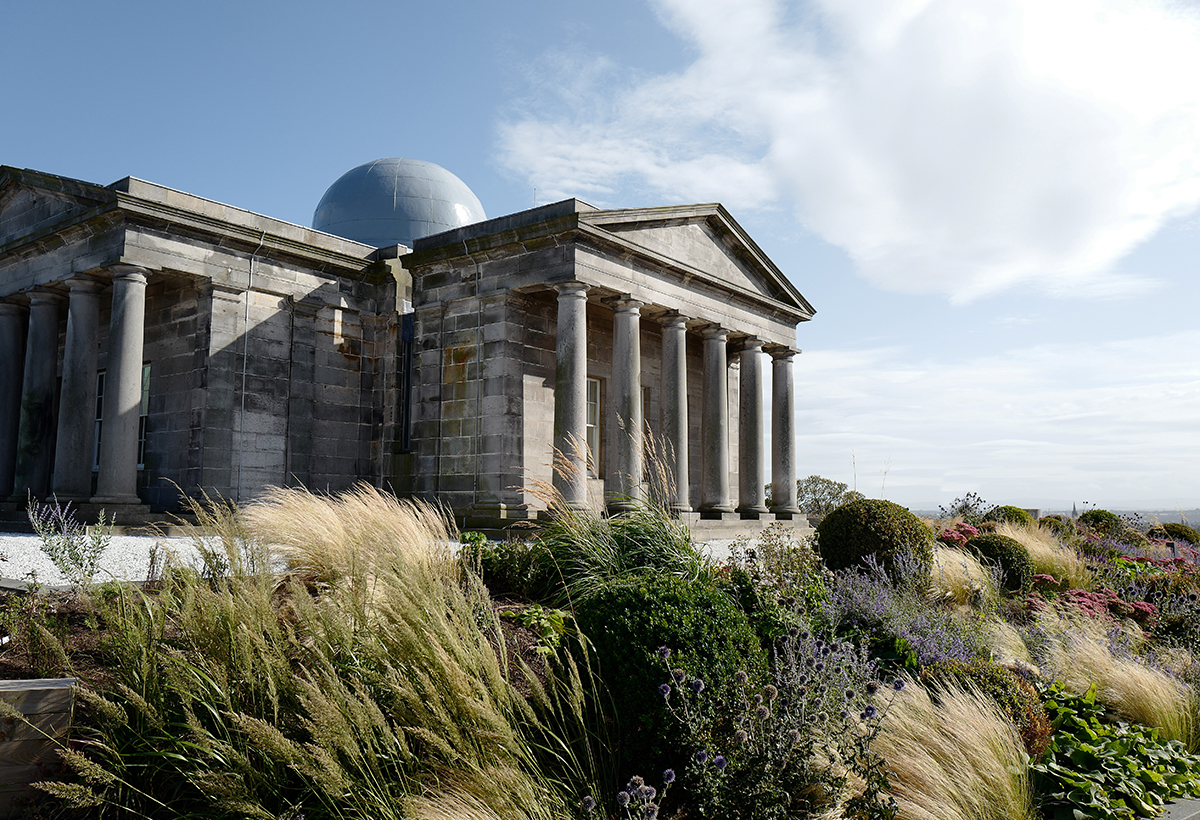
“We wanted to document some of the work we’d done and really mark the team we work with, the clients that give us the jobs, and the collaborators we work with such as engineers, consultants and architects.
“Over the course of lockdown and the pandemic, it became more of a reflection on what the practice stands for. We structured the book around our values. We’ve got six values within the practice we work with and to. That formed six chapters of the book and we chose projects that were relevant to those values. On either side of those central values chapters, we had present, and then a future and reflection on 2020, and what that has meant for architecture and us as a business.
“It started off as a little, modest book (and has grown) to something that’s now a good two centimetres thick. We’re really proud of it; it’s a great book that has lots of interest in it, not just projects but great bits of interest from essays that people have written.”
Ann Allen from Architecture & Design Scotland provided the foreword, while the challenges set by clients and collaborators are documented in the book. These ranged from mental health sessions and climbing Munros to reducing office waste by 30% and using active travel methods. Quirkier challenges included asking each team member to choose their favourite landscape from around the world and matching it with a beer from that location, and a challenge to do 12 things for bees, which involved a talk by a beekeeper and the introduction of ‘flower bombs’ and even an office bee bath.
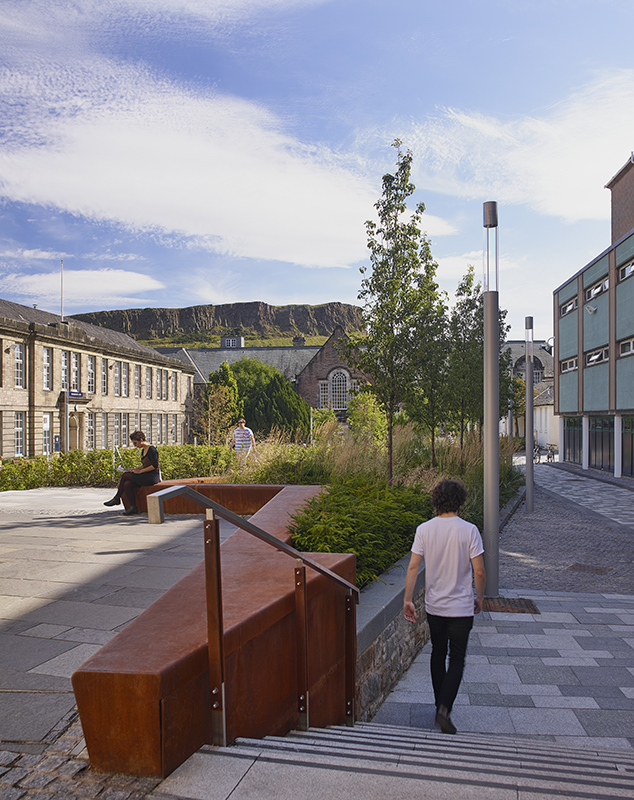
Many of the activities were great for team morale, which is something HarrisonStevens is keen to promote, having witnessed the positive impact regular online catchups had with staff during lockdown. Younger team members in particular were likely to be working from home in shared flats with no garden. Mike stressed he was very much aware of the potential impact on graduates who were denied the opportunity to learn through ‘osmosis’ by hearing senior team members making phone calls to clients or pitching for new work. Therefore, it was a relief to get back into the office once restrictions were eased.
In terms of the societal impact of the pandemic, Mike explained it has made everyone so much more aware of the value of landscapes. He cited the early days of lockdown when people could only leave their homes for short periods to exercise.
“That was really interesting for us as a landscape architect so when we came back with new commissions that were being given to us during that time… projects that were coming forward were far more engaging because the client appreciated, on a housing project for example, that the landscape could really add value to the development,” he said.
“People want to be outside, so give them more garden space and more access to the natural environment. A lot of active travel projects came up, giving people the ability to cycle many miles out of city centres and get out into the countryside. That’s really positive and what we’ve been conscious of doing is making sure we benefit from that as a business because it would be a shame to go back to normal and not take that opportunity to maximise what we do to the benefit of the people who use the spaces we create.”

Reflecting on the changes that have taken place since the practice was founded in 2010, a significant one is sustainability. Two team members have been recruited in recent years with this in mind, focused on aspects such as sustainable drainage systems and looking at ways to use the landscape to improve the environmental outcomes of projects, such as the planting of more trees to help reduce temperatures and lower pollution.
With so many more mechanisms now in place to measure sustainability, Mike explained that the practice is pushing the natural capital asset assessment and is currently looking at that in the Custom House Quay project with Glasgow City Council.
“They are on board and looking at this as a test area to then look at expanding it to the whole of the Clyde within the city area,” Mike said. “Before long you will have this mapped natural asset in the city centre for which any development that comes forward will be matched against. It will set the discussion and priorities for each of those developments.”
When it comes to embracing new methods, Mike admits there is still sometimes a ‘disconnect’ between the design process and how projects are implemented on the ground.
With landscape still seen as ‘a bit of a contingency’, if a project starts to run over-budget it is this aspect that is often compromised. HarrisonStevens has a mechanism to try to remedy this.
Mike said, “We have this process called PACT (Priorities, Assurances, Context and Timeframe), which tries to set the principal priorities for projects with the client and the contractor early on. It means we can hold it up as an evidence paper whenever there’s pressure on the landscape later in the project.
“That PACT process is an agreement essentially with the client and it was put across by us to try and smooth out that transition between the design process and the implementation. It’s too early to say whether that’s been successful or not, but it is something we’re keen to promote across all our projects.”
Looking to the future, Mike expects further organic growth over the next decade. There are areas the team is keen to engage on further such as the future of town and city centres in a rapidly changing retail environment.
“We’re happy at the level we’re at,” Mike added. “We’ve got a great team that we can manage. We are looking at successional planning within the team. Are there members of the team now able to step up and become part of the management team over time? What can we offer clients cost-effectively that gives as much value to their residents, users or office workers as possible? It doesn’t have to cost a lot of money. Just making the natural environment accessible can be incredibly valuable. That’s one challenge.
“The other area I focus a lot of my work on is high streets. I think our town and city centres are failing because of lack of identify, lack of relevance. We need to get more relevance back into the high streets for communities that use them.
“Cities and towns in particular are really struggling because of the bigger brands that are leaving. What can those buildings be used for? Can they be sublet? Can we have community engagement within them in terms of markets and things that are small-scale? Can we start to reflect more of the mobile working? Landscape can help to make streetscapes within those towns and city centres more relevant. That’s certainly more than a ten-year challenge. We’ve got to shift that thinking about high streets over the next decade.”







